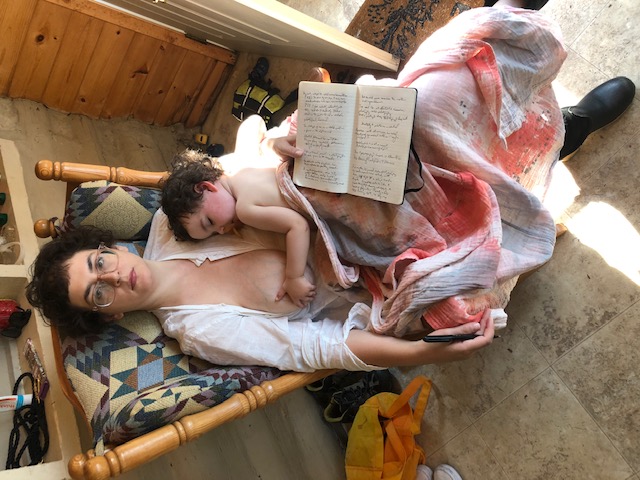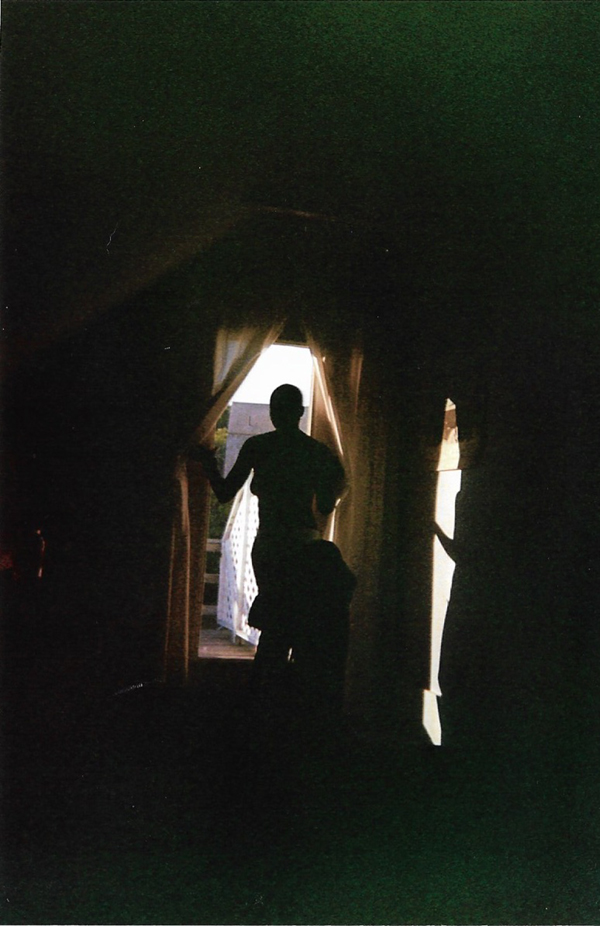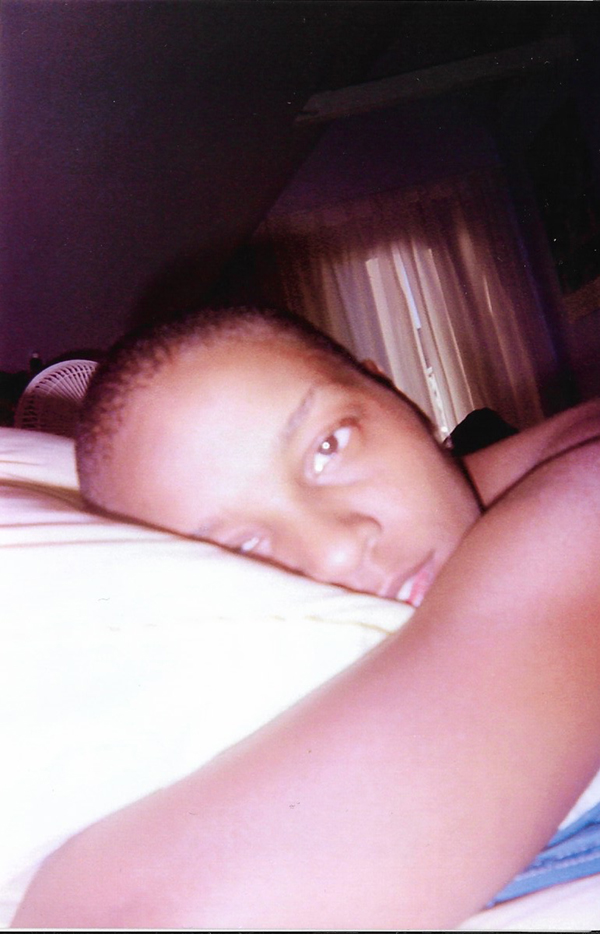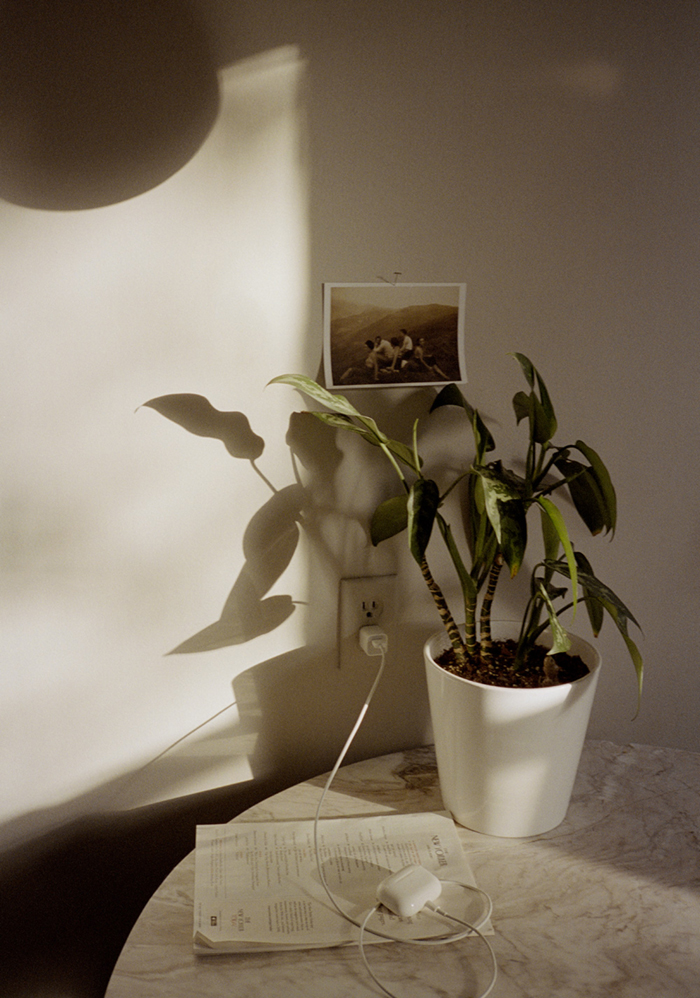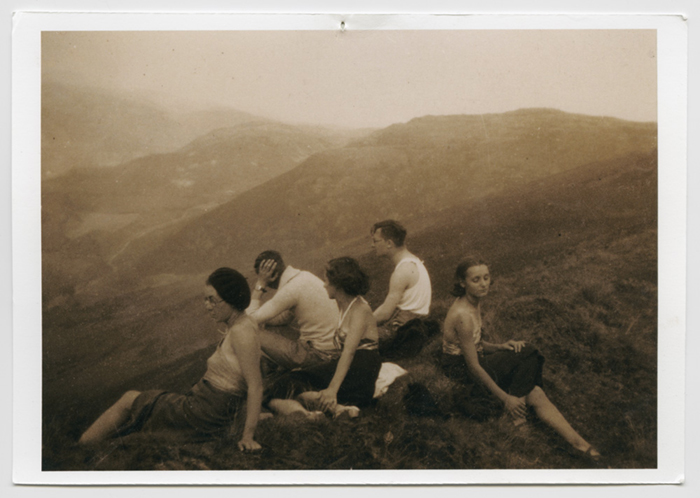Born in a century lost to memories
Falling trees, get off your knees
No one can keep you down
During this iffy period I have been writing a lot and been listening to lots of dub reggae, juju and high-life music like Lijadu Sisters, Chief Commander Ebenezer Obey, Admiral Dele Abiodun, Jennifer Lara, Hugh Mundell, Solomon Ilori… the list is endless. Also in the mix are indie musicians; Weyes Blood and Jessica Pratt. Happy solitude with deep soulful contemplation.
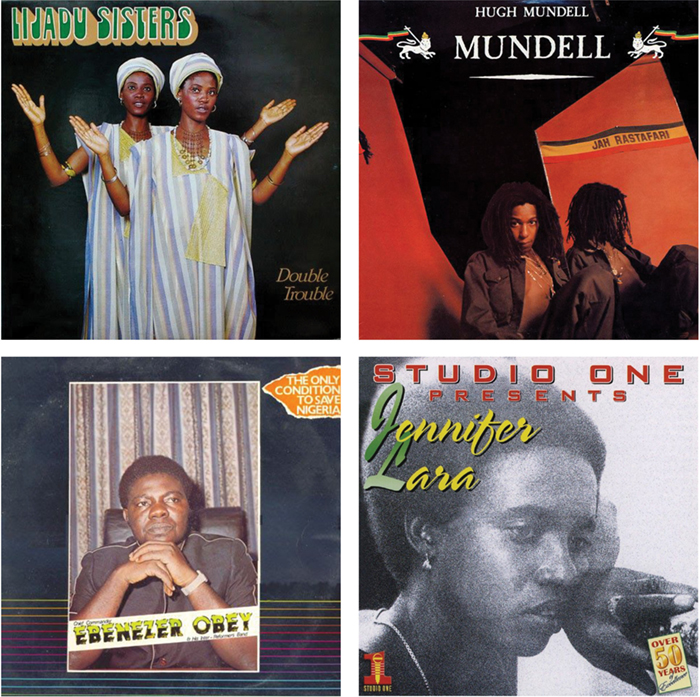
In the dying days of May 2020. Hannah came to South London to take my portrait beneath the shade of a fig tree in the shared garden. Hannah and I are present students at RA Schools in London and because of COV-19, all lectures and artist talks took place online from mid April to late June. Because of remote work, time seemed to be so flexible, yet a little intangible. Anxiety plagued at the start but now in July, there is a great thirst for knowledge and much optimism.
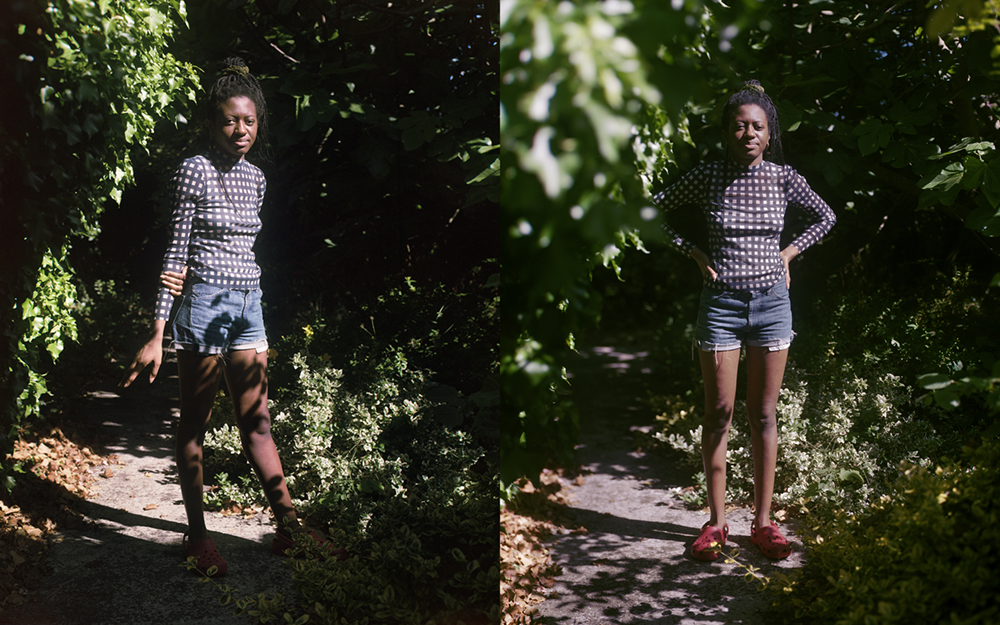
CONVERSATION BETWEEN HANNAH LISTER AND AYO AKINGBADE
Hannah arrives at 1pm (sharp) and Ayo pours Hannah a glass of coconut water. Hannah prepares her 4×5 field camera. They discuss the previous months of enforced solitude. Ayo asks: ‘denim shorts rolled up or rolled down?’ (They both agree: rolled up.) The sun beats down.
HL: ‘Cause this camera is really hard to focus you have to stay in exactly the same position, pretty much
AA: I love this portrait… Wolfgang’s…
AA gestures to her phone screen which shows a portrait taken by Wolfgang Tillmans
HL: It’s funny
AA: It’s at the ICA
HL: I can’t picture his work though. What’s his work?
AA: Who?
HL: The guy in the picture
AA: Richard Hamilton?
HL: Oh yeah, graphic-y pop art
AA: Yeah
HL: [hands AA a light meter that is sync’d to a flashgun]
OK put this in front of your face and press the button
AA: [points to a button on light meter]Oh now? This one?
HL: No the one on the side
AA moves her finger to another button
HL: That one
AA: OK so when I go [AA presses the button triggering the flash]
the flash triggers
HL: Yeah
AA: Have you got it?
HL: [looks at light meter reading] OK that’ll be alright
HL dials settings into the flashgun
AA: Is that dress from COS?
HL: No it looks like it is doesn’t it. It’s from Arket, pretty much the same place. I’ve decided I’m not shopping at Cos anymore
AA: Why?
HL: I feel like it makes everyone look the same
AA: Where else would you get your clothes from?
HL: I don’t know. Is that top from Cos? Oh yeah I was with you when you bought it. Press the button again
AA: I clicked it
HL: What number does it say on the right?
AA: 2.89
HL changes the dial on the flashgun
HL: Do it again what number does it say now?
AA: 4.0
HL changes the dial on the flashgun
HL: What does it say now?
AA: 5.6
HL: 5.6 woooohoo!
HL: What?
AA: You could drive to hers
HL: Where is she?
AA: Newham. Like, towards Ilford, kind of thing
HL: Where’s Ilford? I don’t know London at all
AA: Like past Stratford, like maybe 20 mins after Stratford
HL: So that’s like really East. That would take ages wouldn’t it
AA: Yeah. Even from Hackney it took like an hour
HL: Really? So I couldn’t really do it from Ealing could I?
AA: Yeah you could. A day trip
HL: Maybe we’re not getting enough of the leaves in here. Maybe if we move towards that one
AA: This one? [gestures towards another branch of the fig tree]
HL: Yeah and then the light will come in over you
AA: You know we could go from this other way? Like if you go over where the sun is?
HL: That might be better mightn’t it
AA and HL walk over to the opposite side of the fig tree
AA: Like here?
HL: So if you just stand there. That light is so nice. I’ll go back and get the rest of my stuff
AA: The sun is fierce
HL: What is?
AA: The sun. All the sunrays
HL: Ah I need some fabric to go over my head so I can see what I’m shooting
AA picks up the house keys that she has placed on a rusty BBQ and hands them to HL
HL: What should I get?
AA: Oh I have something green. I have something
AA takes the keys off HL and runs inside, a minute later she returns with a brightly coloured blanket
HL: OK if you could stand in that pool of light. Do you want it to be full body or not?
AA: I do
HL: Yeah? OK
AA: [takes phone out of her front pocket and places it on the BBQ] I’ll just move my phone
HL: Can you look directly at the camera? Just so I can focus your face. Maybe we can do two, one of you looking directly at the camera and one not
AA: [gestures to the camera] Have you been using this outside?
HL: Yeah I have, I’ve been walking around my neighbourhood with it. Not with the flash as much
AA: Why do you need flash if it’s sunny?
HL: It just pops everything. It takes certain shadows away. Look at the camera
AA: What?
camera clicks
AA: Oh why?!
HL: [laughs] I hadn’t loaded the film don’t worry
AA: Oh my gosh, oh good
HL: Why good?
AA: Because I was too relaxed
HL: It’s good to be relaxed! You don’t want to be posed
AA: Well sometimes you can look kind of dumb if you’re not posed. I want to have a pose with my hand on my hip
HL: Do you? I like catching you mid-pose
AA: You have two shots right?
HL: Yeah. Look away. Then I’ll say look at the camera and then you look
AA: But then my expression
HL: It’s better than having a posed expression
AA: [sighs] OK
HL: Look over there [gestures to AA’s left] …Now look into the camera
HL removes the darkslide. The camera clicks
HL: That’s a really nice shot!
AA: Did you take it?
HL: Yeah. I like the way you’ve got your eyes folded, I mean your arms folded. Usually like the first 9 photos aren’t good and then the tenth will be really good
AA: Usually
HL: Yeah… I mean we will both just relax more and more as we get into it
HL replaces the dark slide, turns around the film cassette in her camera and pulls out the second dark slide
AA: It’s so nice isn’t it [looks to the sky]… the birds
camera clicks
HL: That’s beautiful. Maybe I’ll do one more out here
HL takes another pre-loaded film cassette from her bag
AA: [holds up her little finger, it’s wrapped in a plaster] Can you see this in the pic?
HL: Yeah. Show it in the pic, just go like that [puts her hand close to face]
AA copies HL
HL: I hope you’re not blocked by this branch
AA: Should I do a staged one? [points at the large stop sign ring on her finger]
HL: Yeah you could do that; you could put your hand so the shadow covers your eyes
HL sets setting on camera
AA: [takes a fig in her hand without pulling it off the tree] There is dust on these
HL: Yeah you just give them a rinse. When they go purple they are delicious
HL: [puts her head under the fabric that AA has lent her and focuses the camera] This is well good this blanket
AA: IKEA
AA: I just feel like this is just such a strong pose.
HL: Do you? Do it then! Definitely do it if you feel like that. I’m just gonna read the light again so I know I’ve got it spot on [HL puts the light meter in front of AA’s face and presses the button] f16!
AA: Ah so different to last time. Maybe the sun has changed
HL: Yeah maybe
camera clicks
HL: That looks nice you know. This is so nice. The first ones might be a right off but…
AA: You have ten exposures. So 8
HL: Yep
AA: I was talking to an Uber driver
HL: Are you in the same position? Oh go on…
AA: and he said that if you’re sick and you go to hospital it’s game over
HL: What? Who was saying that?
AA: An Uber driver
HL: If you’re sick and you go to hospital it’s game over? What That’s nonsense. I can see the logic in that but it’s not like it’s game over for everyone
AA: He was like, if you’re sick just stay at home. He says even if you have it don’t go. It’s a death sentence
HL: People like to make people scared. They love the scare factor
AA: When does your portfolio go on your website?
HL: I haven’t got a website
AA: But when if you do
HL: I don’t know. Maybe third year. Maybe in 10 years. How’s your website going?
AA: *James is meant to do it but he’s taking so long so I’m hoping…
HL: Where did you find him?
AA: I’ve known him for years
HL: Right. Put your head down like this and then look up. OK. Put your body to the side like that and look up. Does that feel natural to you?
AA: So like this
HL: Yeah I think that’s good. Only if it feels natural to you though
AA: It feels natural! [Laughs]
HL: OK let me just put the film in
AA: People will probably laugh at my crocs but I love it!
HL: They look good. The red goes well with the green
[the sound of sirens in the distance gets louder and then gradually fades]
AA: So loud! Did you buy any of the art editions?
HL: No. I was waiting for the William Eggleston edition to be released but I’m not too keen on the image. It’s a young girl in the seventies
AA: He’s still alive isn’t he?
HL: Yeah I think he is. Look right to the back of the garden. Ok then turn round and look into the camera
camera clicks
AA: Did it work?
HL: Yeah. We’ll do another
AA: Taking photos is very… oh hi [AA nods to a neighbour that has appeared on the first floor balcony]
HL: [HL turns around to see what has caught AA’s attention] Oh hi [she waves at the neighbour then looks back to AA] Taking photos is what?
AA: It’s very… you have to… go in
HL: Intimate
AA pauses to ponder this
AA: I don’t know how celebrities do it
camera clicks
HL: That’s nice. That’s really nice. Do you wanna do one more?
AA: How many more have we got?
HL: Six
AA: I really like outdoors. Maybe one more outdoors and five indoor
HL: I should have maybe brought more film but it’s good to set yourself a limit
AA: You have the same camera as the artist called Deana Lawson
HL: Oh… her work is interesting. What sort of camera?
AA: It looks like the same as yours but it’s very detailed
camera clicks
HL: Right…should we go in then?
AA and HL begin to gather their belongings
HL: Your neighbour seems really friendly
HL: What time is it?
AA: I think it’s 4.20. Oh gosh we’ve got the artist talk…
They dash back into AA’s flat. The conversation continues…
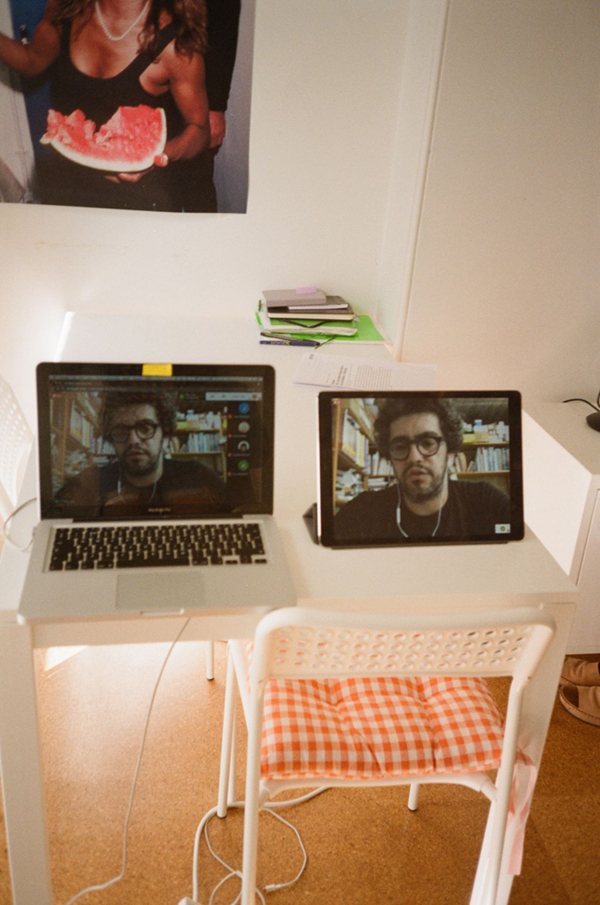
—
Ayo Akingbade is an artist, writer and director. Her work addresses notions of urbanism, power and stance. She has exhibited and screened widely, including presentations at Institute of Contemporary Arts, South London Gallery, Birkbeck University, Walker Art Center, Somerset House Studios and Instituto Tomie Ohtake, amongst others. She lives and works in London, United Kingdom.
www.ayoakingbade.com
www.lux.org.uk

